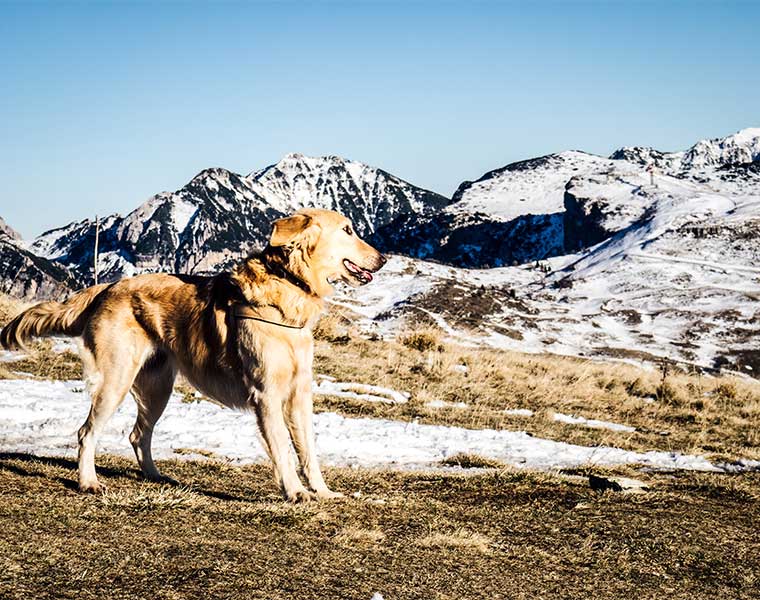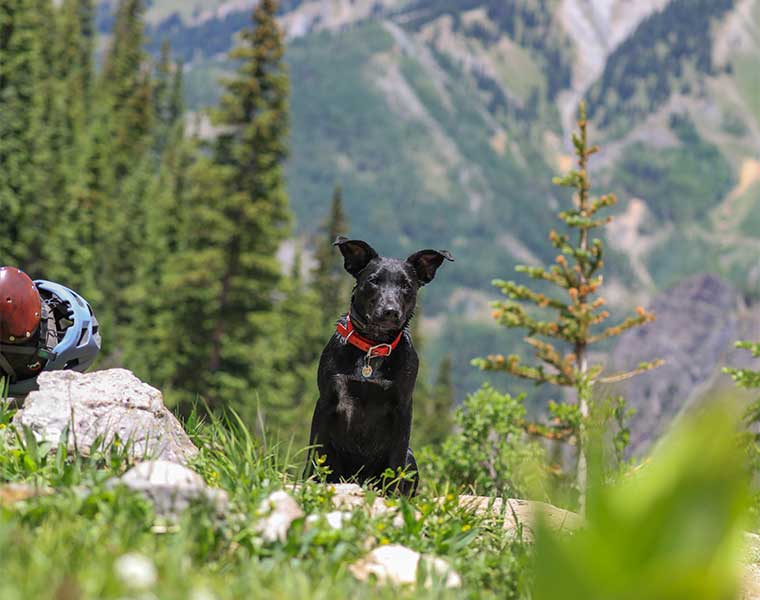Tips for hiking with dogs

Hiking outdoors is wonderful, yet many pet owners find it painful to leave their companions at home waiting. The doubts about whether to take him or leave him are distressing for some: can he come along, is he ready?
But the good news is that hiking with dogs is a great idea for both the animal and its owner. This way, together they can enjoy nature, exercise and most importantly, strengthen their bond.
Although it is a beneficial and safe activity, there are still many doubts about it. Therefore, the most frequently asked questions will be answered below, as well as tips and tricks to take into account to make this activity an unforgettable experience.
What to bring?
One of the basic things to bring when venturing out on a trek is a backpackIn it, all the necessary equipment is carried. In the case of dogs it is not very different, your dog could carry its own backpack. It should be small and designed according to the size (no more than 25 percent of the dog's own body weight) and age of the dog.
Contrary to what many believe, this will not hurt the dog, nor will it force him to carry a weight he cannot. But it is of great importance to get the pet used to carrying the pack before the trip, as well as to make sure that it fits perfectly on his body, and of course, to make sure that the leashes are securely fastened at the start of the journey.
Baggage should contain the following items:
First aid kitFirst-aid kit: A first-aid kit is indispensable. And just as we usually carry medicines for human consumption, a consultation with the vet should be made to find out what medicines and items the dog needs in the circumstances that may arise.
Dog bedIf we are going to be on the road for several days, it is also necessary to provide the pet with a comfortable place to sleep. You can make a comfortable dog bed with a small quilt (the size of a cradle) and a piece of closed-cell foam.
WaterIt is essential to keep your dog well hydrated during the whole journey, so it is compulsory to carry a water container large capacity. A light, collapsible dish can be used to serve the dog and the water poured into it.
Ankle bootsBoots are often necessary to protect the animal's feet from thorns or sharp rocks. But spare parts are also necessary, as the animal drops them.
Towel and nail clippersThese items will be necessary if you are going to spend the night in a tent. To keep a dog's paws clean inside the tent you will need a towel (for the cleaning of mud from the legs) and a nail clippers (to prevent nails from tearing the tent fabric).
Dog coatIf you are in a cold area, the dog should be properly protected in low temperatures, especially at night. This is even more important when the dog does not have a thick coat to protect him from the cold.
Safety lightWhen night falls, it is important to be careful not to lose sight of your pet, which is why a safety light helps to locate him more easily when the sun goes down. On the other hand, there are reflective armbandswhich increase the visibility of the animal.
Tips to bear in mind
There are several tips to consider if you want to successfully hike with a pet. Here are a few:
Getting your dog used to the new 'elements' of hiking
Some of the practices that will be carried out during the journey may be strange for the animal. That is why you should get him used to them at home. For example, to familiarise him with his backpack, he can be made to walk with it empty for a few days first, and then put weight on it.
Or when it comes to booties, you can put them on your dog at home so that he adapts to the feeling of having them.
Hiking in nature parks and reserves
Nature parks and reserves are ideal for hiking. They are safe and secure places where a pet can be safe and covered against any incident.
However, you should first make sure that the site allows dogs, as many parks and reserves do not.
Clean up dog waste
It is necessary to clean up dog waste no matter what. Not just because it is common practice, but because other hikers will be visiting the same site and the spread of disease must be prevented.
It is necessary to carry small plastic bags for this. If double bags can be used, so much the better.

Tips and tricks
Put the animal through a training regime in the weeks leading up to the trip. The animal needs to be accustomed to the kind of exercise it will get during the trip. Short daily walks of increasing duration will strengthen the dog's legs.
If it is dark, you can dispose of the dog waste by digging a hole with a small shovel and depositing it there. It is recommended that it be at least half a foot deep.
Dog booties can be made from old woollen socks. Just fix them to the paws with adhesive tape.
If you are planning to sleep in a sheltered shelter, find out beforehand whether dogs are allowed. Nowadays there are many shelters and hotels where pets are allowed, but even today this is not the norm.
Safety while hiking
Safety is an issue that should be a priority when discussing hiking with dogs. It is therefore necessary to ask whether the pet needs specific preventive medication or vaccinations for the trip.
For prevention and safety, a visit to the vet should be made, where the vet will explain the diseases to which the dog will be exposed and the medicines or measures that should be taken or practised. The same applies to vaccinations and the dog's immune system.
On the other hand, you need to be aware of the regulations of the site you have chosen as your destination. You need to know about the rules of the park you will be visiting. For example, in some reserves a dog cannot be kept off-leash, in others it cannot even be kept off-leash.
We must also be able to control the dog in all aspects. It is not enough to keep it with a beltThe hiker must obey the indications given to him, in order to avoid problems with other hikers and other pets and wild animals.
Fastpacking is not about going faster. It's about going lighter.
If you come from classic trekking, this is the next step: learning to move with less weight,
more fluid and enjoying every kilometre more.
Join the channel and start discovering what lightness feels like.



